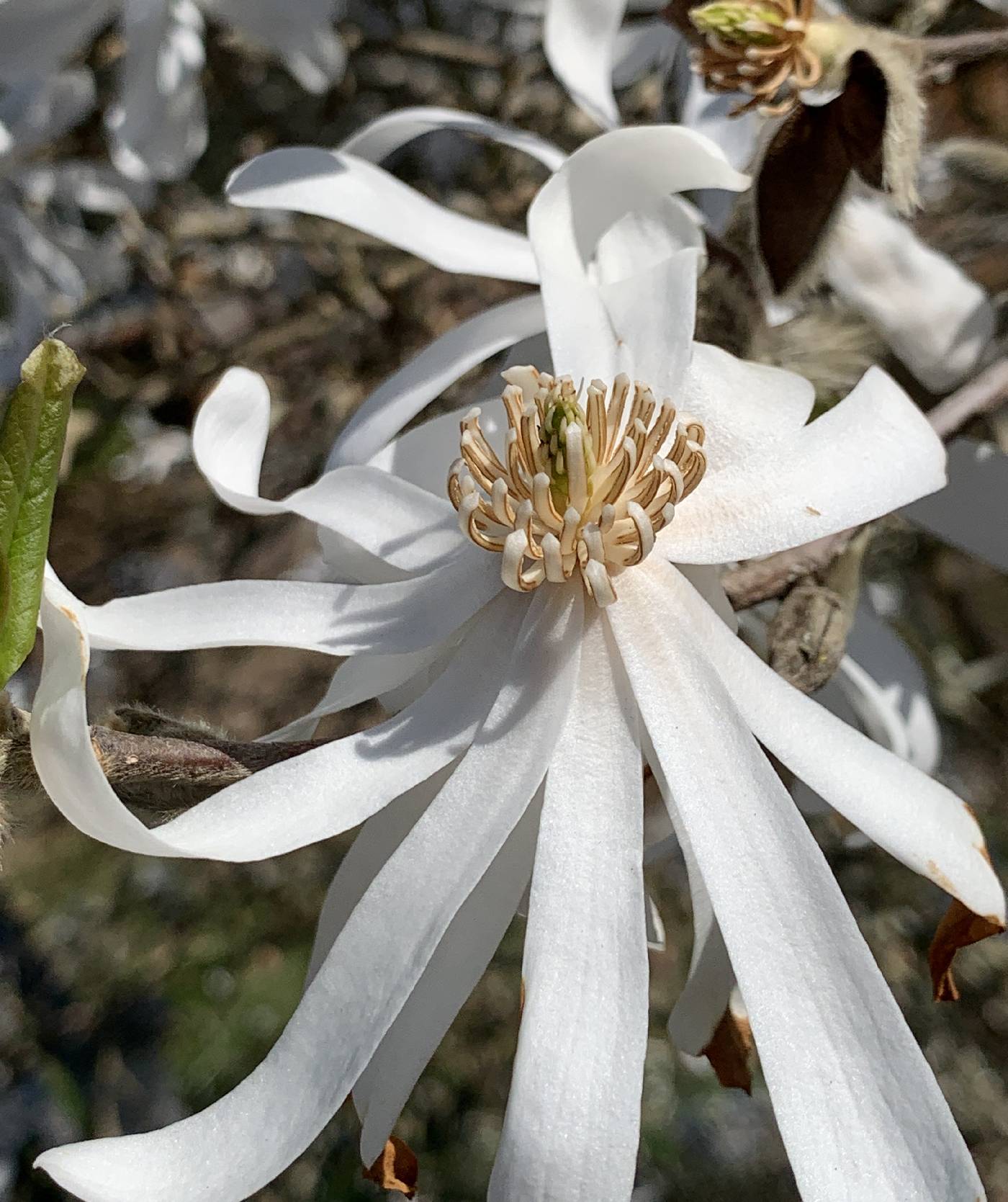Magnolia
|
Family: Magnoliaceae |
Trees or shrubs , deciduous or evergreen. Pith homogeneous or diaphragmed. Leaves distinctly alternate or sometimes crowded in terminal whorl-like clusters; stipules early deciduous, free or adnate to and proximal on petiole. Leaf blade: base deeply cordate or auriculate or cuneate to abruptly narrowed or rounded, margins entire, apex obtuse or acute to acuminate; surfaces abaxially chalky white or green to glaucous, pubescent or glabrous. Flowers protogynous, appearing with or before leaves; tepals 9-15, petaloid, usually spreading, creamy white, rarely greenish, yellow, or orange-yellow, outermost tepals sepaloid, sometimes strongly reflexed, greenish; stamens on elongate torus, early deciduous; filaments white or purple, very short; anthers introrse or latrorse. Follicles persistent, coalescent, forming conelike aggregate, abaxially dehiscent. Seeds with red, pink, or orange oily aril, extruded from follicles and suspended by funiculi. x =19. All species of Magnolia in the flora are cultivated. Many of the Asiatic taxa are also grown in the flora area. Numerous hybrids and cultivars from those taxa have been introduced to horticulture.
Perianth of 9-15 similar or scarcely differentiated members, in 3-5 whorls; anthers introrse; pistils many, on an elongate receptacle, ripening into a cone of coherent, extrorsely dehiscent frs; seeds red or pink, remaining attached by a threadlike funiculus for some time after dehiscence; trees or shrubs with large lvs and fls. 80, trop. to warm-temp Gleason, Henry A. & Cronquist, Arthur J. 1991. Manual of vascular plants of northeastern United States and adjacent Canada. lxxv + 910 pp. ©The New York Botanical Garden. All rights reserved. Used by permission. |

